C.M. Rosens's Blog, page 10
March 7, 2025
Author Spotlight: Em Rowene
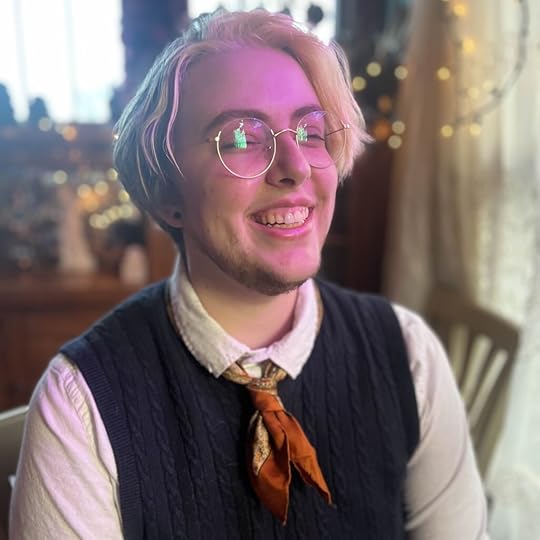
Em Rowene (he/they) is a fantasy webserial author writing at the crossroads between old school fantasy and creeping gothic horror.
When not writing, you will most likely find them practicing their lute, trapped somewhere under one of their six cats, or baking vintage pastries.
Author Links:
Website (and book link): queerenigma.com
Bluesky, IG, and Tumblr @ emrowene
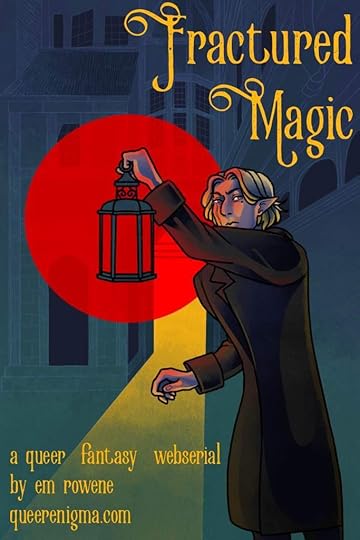
Let’s talk about your web serial, Fractured Magic. It’s an ongoing fantasy serial with Victorian Gothic overtones – what led you to merge Victorian Gothic (in particular) with fantasy to create this story/setting?
When I was young, there were two books I had memorized almost front to back: Dragons of Autumn Twilight by Margaret Weis and Tracy Hickman, and Jane Eyre by Charlotte Brontë.
Of the books that shaped me, most fell into one of two categories: the sword and sorcery boom of the 80s and 90s, or the melodramatic gothics of the late 19th century. So when I sat down to write Fractured Magic, I wanted it to be a love letter to both.
Fractured Magic is set in a world where magic isn’t supposed to exist, AND YET… Was coming up with the magic rules and sources of magic difficult, and can you tell us about your worldbuilding process? What was your favourite part of worldbuilding?
It was certainly a challenge. In creating a fantasy world where magic is a rarity, a secret that’s uncovered as the story develops, I knew I was limiting the number of impossible things my readers could believe. If I tried to incorporate too many, “no magic” would begin to lose its bite.
If I tried to incorporate too few, the slow integration of magic into the world would have no emotional payoff. That said, the challenge was what I enjoyed best.
In terms of worldbuilding, I very much approached it the way I approach writing mysteries: starting at the end and working backward. If almost no one has magic, who does have it and why? What do they do with it? Well, it seems they kidnap a king.
What are the main themes in Fractured Magic, and how does the world, settings, and genre of the serial help you to convey them? Are you exploring some via mini-arcs, or are most themes overarching?
More than anything else, Fractured Magic is a story about personal and political accountability. What do you do when the government that’s supposed to protect you has failed in its crucial purpose? When complacency has stopped being an option, what can you do but act?
Fractured Magic’s unique genre certainly helps answer these questions, both the epic fantasy and gothic aspects of it playing a role.
The Epic Fantasy: Fractured Magic being an epic fantasy lets me explore these questions in a large-scale but controlled environment. We have a greedy government that’s built off a god’s lies, and it’s preying on a city-state beyond its control.
Each character has their own mini-arc, their own internal challenge to overcome: Leandros gets so lost in anger that he loses sight of his values, Dinara is so afraid to stand up that it harms those around her, Evelyne has been gaslit and indoctrinated for so long that she can no longer discern the truth, and so on.
The Gothic: the gothic aspect of Fractured Magic gives me space to explore the question of accountability on a more personal level, in the heightened emotions this sort of fantasy scenario creates in its heroes. Most of this is centered on Egil – in his descent into madness and monstrosity, in the sense of the sublime in the magic slowly corrupting him, and most of all, in his guilt.
Both Egil and his narrative foil – a god the world called a villain – are haunted both literally and figuratively. Literally, in the form of spectres and zombies, and figuratively, in the wrongs they’ve committed and that have been committed against them. They both independently reach the same decision: to destroy Unity and all it stands for. But are their reasons for doing so right? Can they do it alone, or will they need to forgive and accept help? Will they destroy themselves in the process?
Tell us about the queer rep in the serial – what can readers expect?
Much and more! Even beyond the primary mlm pairing, I would venture to say that at least half of the large cast is queer in some way: there’s a side wlw pairing, a few canonically trans and nonbinary characters, and a hero who definitely falls under the genderqueer umbrella.
How did you develop your characters and their dynamics for the serial, and can you tell us your favourite things about Egil, Leandros, and Roman, without too many spoilers?
I have to tell this one like it is: I really, really love the messy-exes-to-lovers dynamic. Even better when there’s yearning and a faked death involved, and even better yet when the one who did the faking is riddled with guilt about it. While not quite enemies-to-lovers, I wanted Leandros and Egil to stand as opposing forces – and while they’re busy doing that, Roman slips in-between, making messes and obfuscating borders. In terms of character development, as much as Fractured Magic is a love letter to my favorite books, Egil, Leandros, and Roman are love letters to my favorite characters – and that, naturally, is my favorite thing about them. If you squint and turn your head just so, you might be able to see echoes of that cursed Han Solo-Tenth Doctor combo that was Roman 1.0.
What’s next for the serial, and what arcs are you most looking forward to writing?
I’m about half a year into the Fractured Magic serialization, and volume I of III is nearing its end. I’m excited for all of it, but especially the current arc: in just a few chapters, Leandros will finally be reunited with Egil, the lost love of his life, who is very notably not as dead as Leandros was led to believe. It’ll be messy, dramatic, and once Leandros gets over the shock, they’ll get to begin their slow courtship all over again.
(Another thing I’m very excited about: once Volume I is at an end, I’ll be releasing a physical version and revealing the new cover for Volume II!)
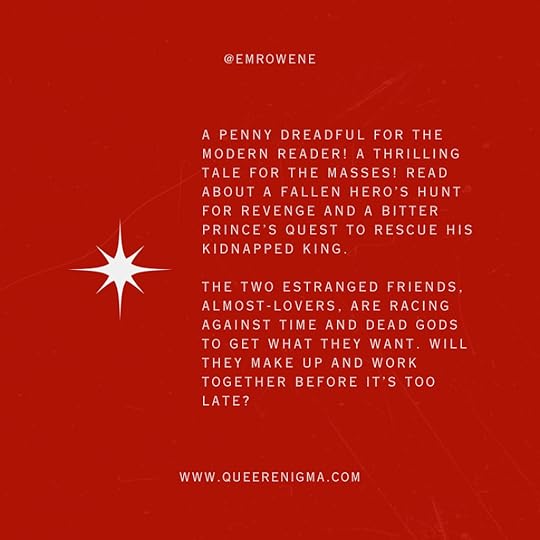 Read itLike This? Try These!
Read itLike This? Try These!
March 5, 2025
Eldritch Girl S04: Yelen & Yelena Episode 03 (Chapters 3 & 4)
Today we’ve got two chapters for the price of one, and it’s an hour long.
You can download this episode as an mp3 file, and get early access to Chapters 5, 6 and 7 here: ko-fi.com/cmrosens/shop/audiobookfiles
Chapter 03: Last Orders and Chapter 04: Winds of Change complete Part 1 of the novel, and next time we’re into Part 2: The Castle, which is the majority of the book. My parts are not sectioned evenly by Acts, but separated by location or major theme.
In these two chapters, we get more of Yelena’s personal history, with a bit more of village life, and the folk religion in that region. If you want to just enjoy the novel, please do grab a copy and read along with the podcast. If you want to learn more about my worldbuilding and religion in Yelen & Yelena, you can nerd out with me below.
Get the BookListen FreeReligion in Yelen & YelenaThere are mainstream religions, and there are fringe cults, and there are various loose iterations of folk beliefs across the country (Ebronia, from Tére Epuroni, the land of the Epuron [people], which meant ‘free/not servile’ people in that tongue > Trepuronia > Treburonia > ‘Eburonia > Ebronia).
The main one that we’re concerned with is Decadianism, which is based around the Sacred Ten [the Decad, which means ‘ten’], who are less gods and more demigods, and formed from leftover magic as an unintended consequence of the dead gods’ atrocities.
The Sacred Ten/Decad act more like patron saints of various things, but don’t interfere in normal life very much – they are guardians of the ten afterlives, and how you die, not how you lived, determines which one you end up in.
There is no concept of “sin” in this religion, which theologically is the abstract concept of what separates you from the perfect Divine, and onto which is ascribed various actions and thoughts that constitute it in actuality.
In this worldview, there is no concept of sin.
Sin is a concept of separation from the Divine due to a perfect God being unable to look upon imperfection, but in this case, the Divine are apathetic to mortality and not that interested in the mortal, living realms. The dead gods, similar to the Sumerian gods in the Epic of Gilgamesh, were so annoyed at the prayers of the living that they sealed themselves away, making it harder and harder for prayers to reach them.
More on that later.
The Decad might listen to prayers, but it depends if someone else is present to carry that prayer to them on your behalf. If not, you’ll have to rely on the dead voices carried by the wind, and if nobody is present at your death to open the pathway to your afterlife by their prayers, you’ll join the wind forever.
There are spirits, of course, who do not feature in the Decad. They could be any number of things, and nobody is absolutely certain. Some say that the spirits simply aren’t real. Some say they are the ghosts of the dead gods. Some say they were always spirits, and always present in the world, and others are agnostic and just don’t think about it too much.
Erish is a spirit that is only recognised in the Provinces, and is… possibly a spirit, possibly the ghost of a dead god of pleasure, possibly a superstitious figment of people’s imaginations, but Yelena believes she might have seen Erish at the moment of sexual climax on a couple of occasions.
Erish worship is the giving and receiving of mutual pleasure, but this doesn’t mean mutual orgasm, as long as both parties are enjoying themselves throughout. Orgasms are encouraged during Erish worship, though, if that’s what one or both parties want, and these are thought of as ‘deaths’, because the aim is to reach a moment of oblivion through pleasure. Therefore, to be ‘slain by Erish’ is a euphemism for orgasm.
However, Erish has nothing to do with life after death, as the dead cannot typically feel pleasure anymore, as they are generally incorporeal. So for the purposes of the afterlife, Yelena is a Decadian.
Even so – I wouldn’t describe her as a mainstream Decadian, because of the Provincial belief in listening to the wind. This isn’t discussed in the book, but I think in other stories I’ll bring this in more – but listening to the dead on the wind is a rural practice and older survival, and not something that people do in urban spaces (it’s too loud, especially in industrial towns and cities). So urbanites have lost that part of their heritage, and many have lost the art and ability to understand what the wind is saying through lack of practice. They tend to look down on people who still do it.
Where Decadianism manifests in urban spaces, therefore, there is a different emphasis on prayer and communal practice than in the rural areas and places like the Provinces, which exist in the periphery and occupy a very unstable place in the understanding of the borders and national identity at this time. I think about the Provinces as being what the Scottish Borders were to Southern England throughout the medieval and early modern period, and also what Brittany or Picardy was to Parisian France, as dialects were being stamped out in favour of a unified, Parisian French.
The Provinces were royalist, so come under intense suspicion from the Oligarchy.
Due to the Counter-Revolution and other, smaller, pockets of unrest and protest starting in the Provinces, there is a lot of suspicion around Provincial folk religion and belief, and discourse around the “corruptive influences” of the spirits still worshipped there.
Urban Decadianism in this country has almost entirely stripped out spirits from its unofficial pantheons, unlike other countries that also practice forms of this religion and have retained their spirit-worship alongside the Sacred Ten, or exalt spirits to the same level. Rural Decadianism is almost considered a separate sect, and looked down on by the urbanites as ‘lesser’ or even subversive and concerning, or a sign that someone cannot be trusted.
These attitudes often prejudice employers and curb advancement of rural people – especially Provincials – in trade guilds and trading guilds. Rural migration to urban areas often simply increases the slum populations rather than works to the advancement of the rural people themselves – this is loosely modelled on experiences of the rural vs urban poor during the English Industrial Revolution, specifically.
I’m also drawing a lot on the distrust of Anglicans [in 17thC-19thC England, taking a big-picture view and zooming in on bits of English ecclesiastical and theological history I think would be most helpful to my world building] towards other Protestant sects, the attitudes around the Toleration Act (1689) and discourse of Dissenters vs Church of England, and those sorts of arguments, to create the conflict within Decadiansim and its fringe beliefs.
There is also the Fraternity – who are basically the Freemasons, but the symbology and cosmology and so on are geared towards mercantile interests rather than stonemason interests, and lean more into astrology and esoteric alchemy – and they’ve got a very strong foothold in the country too.
The Fraternity think of Decadianism through the lens of intense metaphor, and have exported some of their beliefs – like the belief in an additional afterlife of punishment for executed criminals – into mainstream Ebronian Decadianism. This is not a mainstream Decadian belief in other countries, or even in places within Epronia where the Fraternity is not as big of an influence (like the Provinces), even though it’s a belief they will have heard of.
I think I might explore the Fraternity and their relationship with Decadianism in my next story in this universe – AS BELOW, SO ABOVE, the alchemist novel/la. It won’t have much of a bearing on the actual plot, but it might come up in the world building and character interactions.
In future books, you might also see religious rites and rituals being performed. I’m not sure yet, as I have the basis for thousands of years of Decadianism, diverging and evolving as all religions do, incorporating folk beliefs and practices across the world for various reasons and spreading all over the place, but I only need to know the details of a few bits and pieces of it, and how it is practiced in the certain traditions and specific areas I’m writing about.
I think in some areas it may even have developed into monotheism, with the Sacred Ten representing ten aspects of the same deity. Some of the Decad could even double up as both a sacred aspect and a person who represented that sacred aspect, or who was thought to be an incarnation of the deity in one of their ten forms. They could also be demoted into saint-equivalents or servants or prophets around one of the Decad, and form a pyramid of ten figures with the main deity at the top, representing the journey to divinity and purification, or something. Spirit-belief could be continuing in some form alongside this. Even within a monotheistic interpretation of Decadianism, there are a multitude of interesting variants I can play with.
If I ever write a story with a character who is from a monotheist Decadian background, we’ll find out more then!
Music Credits:
Kevin MacLeod (incompetech.com) Licensed under Creative Commons: By Attribution 4.0 License creativecommons.org/licenses/by/4.0
Intro/Outro:
Quinn’s Dream: The Dance Begins
Kevin MacLeod pieces used in Ch 3 and 4:
Folk Round
Achaidh Cheide
Brandenburg Concerto
Leaving Home
Stages of Grief
Blue Feather
Sound Effects:
BBC Sound Effects Library
Floraphonic – Pixabay (monster roar)
March 1, 2025
March Promos! Don’t Miss Out!
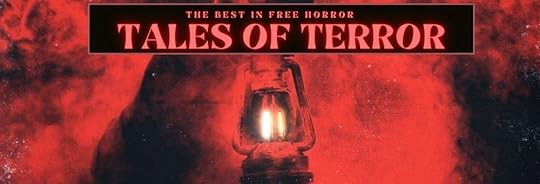
If you want standalone fantasy books, or horror stories, Bookfunnel is running two promos you might be interested in!
I have Yelen & Yelena in the Standalone Fantasy Books Promo, and I’m giving away Overexposure in the Tales of Terror promo, so please share these links on your socials!
Standalone Fantasy Books to buy: https://books.bookfunnel.com/standalonemar2025/yuvw717dw0
If you’re after Tales of Terror, there is a horror promo running with free stories to download. You’ll find my short story Overexposure in here, so if you haven’t read that one yet, now is your chance to get it for free!
Tales of Terror – free horror stories to download: https://books.bookfunnel.com/talesofterror/2afogyl4a0
My newsletter has gone out with 50% discount code to use on my box set of eBooks in my Ko-Fi shop, and some updates on what I’m writing. If you want monthly updates and discounts, sign up! cmrosens.com/newsletter
Don’t miss out!
Plus, in case you missed it, ELRITCH GIRL IS BACK! Season 04 serialises the complete novel of Yelen & Yelena, and has some great bonus episodes for you to enjoy. It will run for 15 main episodes, from 19 Feb-28 May.
Bonus episodes (1-2 per month) may run into June.
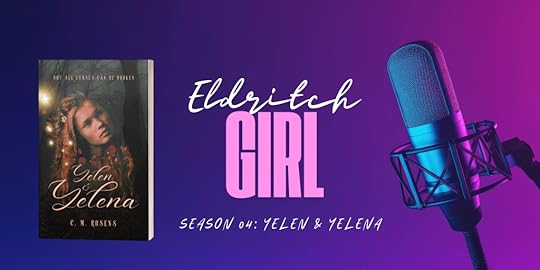 Audio for all my novels can be listened to for free via the Eldritch Girl podcast: cmrosens.com/eldritch-girl
Audio for all my novels can be listened to for free via the Eldritch Girl podcast: cmrosens.com/eldritch-girlSupport me and the podcast, get early access to podcast episodes, free audiobook files to download, free eBooks to download, exclusive monthly short stories, letters from my characters that explain more about the world they inhabit, rituals they perform, and explore their daily lives with experimental, non-canonical plotlines.
February 28, 2025
Author Spotlight: Frankie Sutton
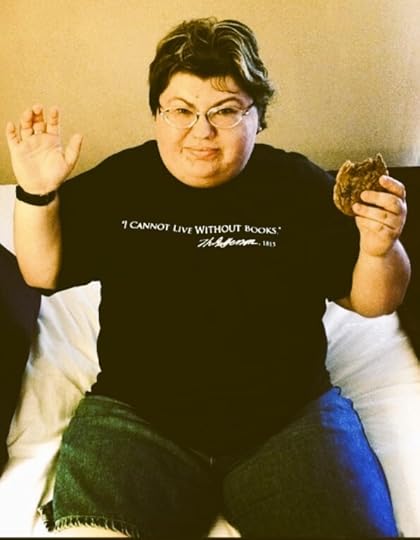
Frankie Sutton (she/her), born within a Motown/Detroit community, was raised on creativity—starting with music. Her love of reading and writing developed during her school years.
However, at the beginning of her high school years, she entered into the world of fan fiction and role-playing games—experimenting with many styles of writing, including poems and scriptwriting. When not writing, she loves bonding with her miniature schnauzer.
Frankie embraces her life as a Motown Michigander, ready to share her large imagination with the world.
Author Links:
website: creatorfrankie.com
X/Twitter: @MotownCountry
Instagram: @motowncountry
BlueSky: @frankiesutton.bsky.social
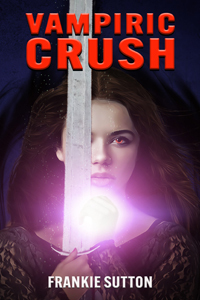
Let’s talk about Vampiric Crush, your urban fantasy/paranormal romance novel. Who are your main inspirations for vampire fiction, and where did the fascination with vampires come from for you?
I’ve always been fascinated with vampires.
My main inspirations are Selene (Underworld franchise), Saya (Blood+, anime), Michelle (Subspecies franchise), and from books such as The Last Vampire series by Christopher Pike, the Blood Ties series by Jennifer Armintrout, and The Vampire Legacy series by Karen E. Taylor. And can’t forget about Buffy the Vampire Slayer.
Can you tell us a bit about the worldbuilding for Vampiric Crush?
While creating the prophecy in the story, researching real world connections helped me figure out where the story took place. Los Angeles is referred to as Jupiter. And Gerard is a self-proclaimed king for that city. Another vampire is in charge of nearby Oakland.
What is the most interesting thing about vampires as a paranormal love interest for you to write about? What is it that makes them so alluring to your protagonist and readers?
Vampires are separate from society. They choose to follow the rules or break them. Their immortality allows them to have experienced historical events first-hand and be around in modern society to tell about it. I believe what makes them truly alluring is their ability to have the freedom to travel and obtain mass amounts of money. Although, they might not really need the money if they have the ability to charm their way through existence. LOL
How do you handle the themes of duty vs desire and self-discovery in the book, and why do you think these themes are important?
A part of Shae’s group is tasked with being slayers, keeping the vampire population under control and hidden from most humans. But for her, she’s been raised to put an end to Gerard.
She’s become disconnected from her emotions, and she only exists to stop Gerard—or so she thought.
Her path is learning how to properly balance duty and desire, aka, business and pleasure.
What is/are your favourite reader response(s) so far?
One Beta reader gushed about how I write just like Anne Rice. (If only I could have boasted about that when querying.) And an editor from the company that published Vampiric Crush claimed: “You showed her dark side, confusion, wanting to go back to her “normal” self but had no control, very well.”
Do you have any future publication plans, anything we can look out for?
Some of my poetry will be published soon in an online lit mag. Details of that will soon be shared in my newsletter. Just visit my website, creatorfrankie.com, and sign up at Team Frankie!
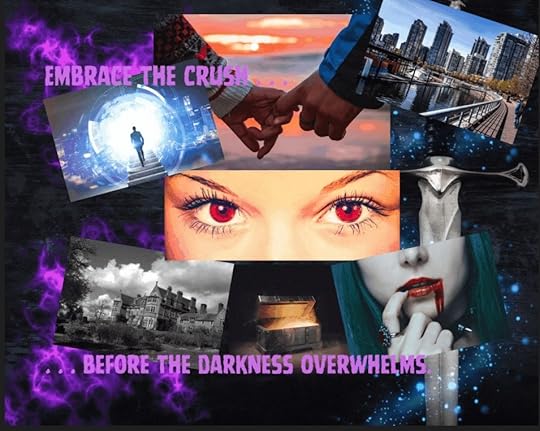 Like This? Try These!
Like This? Try These!
February 26, 2025
Eldritch Girl S04: Yelen & Yelena Episode 02 (Chapter 2)
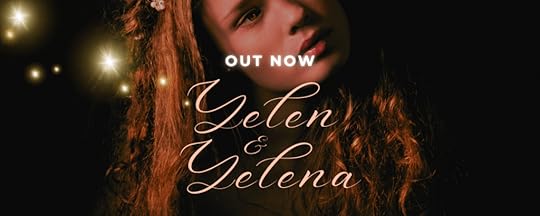
Chapter 02: Old Stories airs today on Eldritch Girl!
Grab the book and read along.
You can also download and keep the audio files on Ko-Fi, and get early access to the episodes via a membership.
Everyone gets the mp3 files for Chapters 1 and 2 for free.
Listen NowRead alongIn Chapter 02: Old Stories, we learn about Yelena and Velna’s youth, and also we hear the stories about a Beast that lives in an enchanted castle in the forest:
“Over the sun and past the moon, a Beast lived in an enchanted castle, in the darkest part of the forest. He was so monstrous that he could kill with a single kiss. He was cursed as a man, and the curse was contained in an enchanted flower from the realms of death.”
– Yelena
The story is more of a Bluebeard type story, which I feel Beauty and the Beast can so often merge into, especially with retellings on the darker side of the scale. I really enjoy blending stories that way.
In this case, the girl is warned not to eat from the enchanted food on the banquet table – which she does not. She forages outside the castle and eats only what the Beast hunts.
She is warned not to go into the forbidden wing – and she doesn’t.
She is warned never to kiss him, because unless there is mutual romantic love between them, she will die at sunrise.
The story’s protagonist sticks to all these rules, but the Beast is losing patience, and the last petal is due to fall from the flower any day now, so that the curse can never be lifted… So he keeps coming to her at night, asking her if she loves him yet, and warning her that soon the last petal will fall anyway, and he will kiss her regardless of what her answer is, as he has nothing to lose.
Yelena’s lips twisted up in a wry smile. “The girl did not go into the forbidden wing of the castle, but kept to the rooms she was permitted in. And she never, ever kissed him, no matter how polite he was, no matter how… charming.”
Yelena’s grandmother had always sighed then, wistful and sad. Yelena kept this in. “And he was charming. And persuasive. But she kept to the three rules regardless, hoping he would spare her life.”
Taryl sat straighter on their stool, although they knew how it ended.
Yelena relished this part – you can do it all right, my darlings, you can live by all the rules, and it doesn’t matter. Those with the power will get you anyway if it suits them.
“The final night, he came to her room, and said, ‘O Katalina, do you love me now?’ and she knew this was the night that she would be kissed, and she didn’t know how to answer him. But she had discovered that a secret passage in the castle led to the dungeons, where she might find a way out.”
Yelena paused, lowering her voice as much as she could to still be heard above the taproom hubbub. “So she told him no, and he was furious. His rage was so terrifying that he lost all control, and she managed to flee the room and find the hidden passage. She made her way below the castle before he could find out where she had gone, and dived into the river that fed the castle well, and nearly drowned, but was washed up very near here, by the bridge over the old king’s road.”
Velna took over, folding her arms. “Now. You may not believe the story, but in that forest there is a monster, and if nothing else – you should learn that sometimes people do not wish to be kissed by you, no matter how much you want to kiss them.”
Rosella made a little gasping sound, and as Yelena turned to her, the girl hurried off.
Yelena looked back at Velna, who rolled her eyes and shook her head. She moved closer to Yelena, squeezing around the table to whisper in her ear. “She’s been after the baker’s boy.”
Yelena stifled a laugh. “But he’s—”
“Oh, yes. He’s very.” Velna shook her head. “She’ll learn. You don’t get what you want just because you want it.”
Yelena kissed her fondly on the cheek. The dramas of the village youth were neither Yelena’s concern nor of any particular interest to her, but it was gratifying to know they were learning the same lessons as every generation before.
“Not quite the moral I was going to go for,” she said, but Bellac stuck his head around the door and broke up the story time.
An early beta reader said she would like to hear the original story the way the Grandmother character told it, and in later revisions, I put this in. I think it works here in a number of ways:
It shows the tradition of storytelling in the culture of the protagonist, and Yelena’s relationship with her traditions and her heritage. I think oral storytelling is a key part of heritage and learning, as it was a central part of Welsh culture (and arguably still is).The way you keep family members and events alive and relevant is by telling their stories. Yelena says this to the younger listeners at the hostelry, and reminds them to count ‘in the old way of counting’ when telling this particular tale, to conserve the memory of how this was done in the past. Their culture has shifted dramatically since the Revolution, and this isn’t a case of colonisation, it’s about the influence of the Interior upon the Provinces, and how the centralisation of power has impacted the periphery of the country.
Storytelling continues to be a key theme in the book, both oral and written, as a form of collective and individual memory.
…It tells you a version of the story that isn’t, in fact, the whole truth or the only version of the story, which you learn later on. You do get a sense of Yelena’s grandmother before the flashback where you see her on her deathbed, and I liked that.
…It creates an atmosphere and you get to see what life is like for the village kids, which I also enjoyed writing.
…Stories have multiple uses and layers to them. Yelena’s moral wasn’t the one Velna went with, and Bellac yells after the children that one day the monster will come out of the forest to eat them, and that’s another thing you could choose to take from it…
I love playing with stories and storytelling as a device.
Which books/authors have you enjoyed that also plays with the medium of storytelling? Tell me in the comments!
February 24, 2025
Diverse Romance and Dark Paranormal: Meet Georgina Kiersten/Jasper Hyde on the Eldritch Girl Podcast
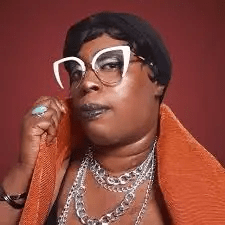
From georginakiersten.com: Meet Georgina Kiersten, the master of melting hearts and bending genres! When they’re not crafting tales of love and diversity in their cozy, low-angst LGBTQ romances, they moonlight as Jasper Hyde, the enigmatic author behind some spine-tingling dark paranormal romances that keep readers on the edge of their seats—preferably with the lights on.
Under the pen name Georgina Kiersten, they serve up a delightful buffet of characters and storylines that are as comforting as a warm blanket on a chilly evening. Love knows no bounds and neither do Georgina’s narratives, celebrating diversity and inclusion. Perfect for those days when you want your drama mild and your tea hot.
Switch to Jasper Hyde, and hold onto your garlic—things get deliciously dark. From vampires in velvet to haunted heroes with harrowing histories, Jasper’s tales are not for the faint of heart. Dive into a world where the paranormal is just another part of the landscape, like a looming, foreboding castle at the edge of town.
Author Links:
Website: georginakiersten.com
Instagram: ingloriousgigi
TikTok: ingloriousgigi
Threads: ingloriousgigi
Bluesky: ingloriousgigi
CMR: Okay, so welcome back to Eldritch Girl. And I’m really happy to have Georgina Kiersten here, who also writes as Jasper Hyde, which you may know from the book Splinter, which was number one on Amazon in – is it “Bisexual Romance”?
GK: Mm-hm!
CMR: Yeah, congratulations on that. I think that hit last week before we recorded.
GK: Thank you very much.
CMR: So really excited to have you here, and really excited to hear an extract from Splinter. Georgina, would you like to introduce yourself to everyone.
GK: Hi, my name is Georgina Kiersten, I am a trans, autistic, queer, Black person; I am an author of diverse romance that features Black people as the main characters, primarily LGBTQ+ romance, cosy romance, and dark paranormal romance. I write under the name of Jasper Hyde and Rian Fox as well, and I tend to write from a Black perspective. I’m just having so much fun writing the stories I’ve always wanted to see on the bookshelves, and I’m just so happy to be here.
CMR: It’s lovely to meet you, and it’s lovely to have you on the show. And you’re going to be reading an extract for us from Splinter, that’s really exciting. It was one of the books that we read for Romancing the Gothic Book Club, and I really enjoyed it. So I’m really happy that you could come on and share that with us. So I’ll pass over to you if you’d like to just give us a little bit of context for the extract before you start, because people may not have read it. For those of us who have read it, yeah, it’s definitely worth reading, guys. Recommend.
GK: The context is my main character, Drusilla Van Tassel, is a medical examiner, and she’s just finished going over the home of her sister’s friend. And I say home, but also like his body, because his body is all over the place. And she is bombarded with the press. And she’s like, I don’t want any comments. I don’t want to talk about an active investigation, and then someone steps forward and calls out her name. And it’s her ex-boyfriend. I wouldn’t even say ex-boyfriend, but her ex-lover, who has returned. And this is a guy that she hasn’t gotten over with right. She pretended that she was over him. She tried to make moves to get over him, but she’s never quite got over him, and so she’s met with this guy that she thought she was never going to see again, and he returns, asking for a favour.
Splinter by Jasper HydeBLURB:
This Is The Legend Of Sleepy Hollow Reborn…
In a small town hidden behind the hills of New York, things are far from ordinary. As Sleepy Hollow’s youngest Medical Examiner, the pressure intensifies for Dr. Drusilla Van Tassel when the headless bodies of her sister Katrina’s friends start surfacing. Meanwhile, Drusilla’s ex-lover Ichabod Crane returns to town, dredging up feelings better left buried.
Things take a turn for the worst when Drusilla comes face-to-face with the Headless Horseman, who is back to settle old scores – and she and her sister are the perfect targets. Drusilla can repel the horseman with an unknown power, but her sister isn’t so lucky, and she goes missing.
However, when Drusilla discovers Ichabod is a monster hunter, she has no other choice but to turn to him for help. Even if that means working with a man she feels an inexplicable attraction to. Will they find Katrina and banish the headless horseman once and for all?
Add To Goodreads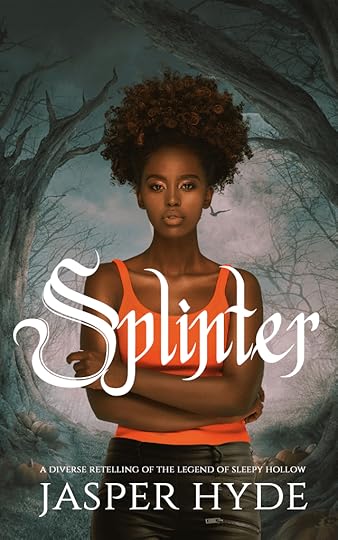 CWs and LINKS
CWs and LINKSInterview Transcript: Discussion
“Drusilla!” He called to her softly, his breath tickling the back of her neck.
She barely repressed a shudder at the way his mouth said her name, as if it was almost a physical caress.
Drusilla snapped her eyes closed, and prayed that this was just some delusion brought up by the traumatic crime scene and a lack of sleep.
“Ichabod Crane,” Drusilla said, taking a shaky breath as she finally turned around. Drusilla couldn’t believe that she hadn’t immediately recognized him when she saw him in the crowd, those damnable fox-shaped eyes cut through her with their intensity. Up close, Ichabod’s hazel eyes were gray-green, with flecks of gold. Their time apart from each other hadn’t lessened the effect those eyes had on her.
Drusilla looked away, her own eyes tracing the features of his face, sharp cheekbones, neatly trimmed moustache, and full lips, lips that she viscerally remembered the taste of.
Drusilla opened her mouth to speak, but nothing came out. What could she say to the man who had broken her heart? The man whose presence lingered long after he left, and now, 16 years later, Ichabod Crane had finally returned to Sleepy Hollow.
CMR: Dun dun dah! I like that meeting. It’s great. So yeah, let’s have a chat about the choices that you made when you were retelling the Sleepy Hollow story and the idea of intersectional representation in fantasy stories, low fantasy stories, folktale retellings, folklore. You know. I wouldn’t call Sleepy Hollow folklore. But like, do you know what I mean? Like? It’s almost become folklore, hasn’t it?
GK: Yeah, as I’ve done my research about Sleepy Hollow, and I’ve talked to people who live in Tarrytown, which used to be a part of Sleepy Hollow, and then they detached sometime in the early, I think, early nineties, early to mid nineties, The Legend of Sleepy Hollow and Washington Irving himself has become his own legend. It’s almost visceral, especially around this time of year.
You can see the presence of that story throughout the town, especially in Sleepy Hollow, because Sleepy Hallow used to be like a historical neighborhood of Tarrytown. But, like Tarrytown has also kind of adapted that as well, so it’s a legend that has become like part of the bigger mythos of that town and of that area.
CMR: Cool. I could imagine it must be amazing in Halloween, yeah. And you kind of took inspiration more from the show than from the story, like the characters and the way that they were treated in the show, especially that well, Drusilla’s character. What’s become Drusilla’s character in your book, versus how that was all handled [in the show]. And so, yeah, can you tell us a little bit more about that and the inspirations behind those choices?
GK: Well, I really did love the show. It was one of my favourite shows of the 2010s. Especially when you had like stuff like Supernatural going on, and – not Lost, that was before that, but you know, around that time where we had Vampire Diaries, stuff like that. For me, what brought me to Sleepy Hollow – Fox’s Sleepy Hollow – was who played the lead, Abby Mills, and that she was a Black woman, a dark-skinned Black woman, playing lead on a paranormal show, and I’ve never saw that before, and I think I haven’t seen one like that since.
I think the closest like The Walking Dead, I think, might be like the closest you get to that, because she’s a lead, but she’s not like the lead. She’s not like the second person in the cast line-up. So, to have a Black woman as lead in a paranormal series was huge for a lot of Black people, especially Black women, especially Black, queer women, and my fiction tends to speak to Black, queer women.
And I saw a lot of Abby in myself in my own experiences, because I’m the oldest child. I thought, you know, they clearly don’t know, as I was rewatching it (because I decided to rewatch it, and that’s how I got the idea to go and get my own closure by writing this book). So, I decided to rewatch the show from the beginning, and I realized that Abby’s character is clearly not being written by a person with that lived experience who is Black, who’s a woman? Right? Especially because when they talk about sisterhood, and in particular with Abby and her sister Jenny, and the way that Black sisterhood is a little bit different than white sisterhood, and there’s nuances there that clearly the showrunners did not pick up.
I really wanted to take a turn at writing it. I love the thought of a diverse, (because the first season of Sleepy Hollow is very diverse), a truly diverse Sleepy Hollow. And then I sort of took my cues from that. Personality-wise, character-wise, I did take a lot from Ichabod Crane, because I love the nuances in his character. I love the twists in his character. I think he added more depth than, like, the Johnny Depp character of Sleepy Hollow (1999).
CMR: Yeah, for sure. Yeah.
GK: When it comes to character creation, I like to go deep, right? Because that’s my wheelhouse is character creation. So when you’re creating a character, you like to go deep, you like to go deep into their psychology, and I think that show really went deeper into what makes Ichabod, Ichabod. So it took a lot from Tom Mison’s Ichabod. Not only did I read the short story which is somewhere over here in my office – I read the short story at least twice – I listened to the audio book. There’s an audio drama on Youtube I listened to, and then I found out that Tom Mison himself narrated an audio book of Sleepy Hollow, and I listened to that as well. And so yeah, so I just like layered like, I took a little. This took a little of that, and then I just layered, and that’s how I got what I got.
CMR: Yeah, that’s yeah. That’s really cool. I love listening to how people come up with their characters, and then the influences and the inspiration. And then how you get that final polished sort of – I don’t like calling them products, but you know what I mean, like when they’re out there, and they’re done, and they don’t really belong to you anymore. And that’s the character that the readers are introduced to. And what has the reader response been to those characters that you’ve lovingly put out there into the world?
GK: Well, 1st of all, like Ichabod is Filipino, and that’s something that surprises a lot of people are like, why would you make this white character into a Asian man, a South Asian man, and I was like, because, first of all, I like to decenter whiteness when it comes to my interracial romance. I know that some writers prefer, like, a white male/Black woman thing, and that’s fine. I will read happily read that. But for me, I wanted to decenter whiteness, and I felt like I had a story to tell about his race, right, the struggles of being Filipino, but also white, and feeling like you’re not enough, and especially because I have biracial kids myself. So even though I don’t live that experience, I have had front row seats for those experiences. And so that speaks to me.
And also like, Black people and Asian people have a really great synergy already right off the bat. There’s something that our cultures just click. With that I thought I thought would fit well within the story.
I marketed this without any sort of shame to IckyAbby, Ichabod/Abby Mills, fans. And those fans tend to again run Black and queer. And so they loved it, because this is finally giving them the closure of a story that they were heavily invested in for like 10 years, because it’s been 10 years since the show has premiered. So it’s been a very long time, and so they could finally see themselves empowered in Drusilla’s fight and her struggles, and also get her see her get the happily ever after in the respect that she absolutely deserved. And I say she, Abby, but also Drusilla as well.
CMR: Yeah, a hundred percent. It was. Yeah, I think that’s I think that’s really cool. And I think there’s also like that intersection of sexuality; bisexuality, demisexuality, the asexual spectrum that doesn’t really get a lot of rep I think, is fair to say, in especially not in queer romance, right like. There are queer romance books with asexual characters — and aromantic characters as well in romances of people who are on the aro spectrum, but it was really cool as well to see that Ichabod Crane is demisexual, which is one of the more misunderstood labels, I think. Can you tell us about why you kind of developed that or chose that for him? Was that something you always knew about his character, and from the layers that you’d picked up, or something that you added in for another reason?
GK: A lot of Ichabod’s character and personality and his mannerisms come straight from Tom Mison’s Ichabod Crane, and I immediately pegged him [clicks] like that, as a-spec.
CMR: YES!
GK: And people are like, Yeah, he has a wife. How’s he a-spec? And I’m like, because he doesn’t date often, he doesn’t fall often. He doesn’t. He doesn’t have sexual intercourse often on screen, or he doesn’t talk about his attraction, or he doesn’t check out a woman very often. He’s very like, I don’t see you until I feel something, and I see that so much through his story, through those seasons.
He reminds me a little bit of a more cooler version, and I say more cool, I mean, like temper wise, a more temperate, more low key version of like Batman in that way that he’s not dating. He’s not thinking about romance at all until it slaps him in the face, and that’s such a very demisexual experience where it has to be literally slapped in your face for you to sort of like, Oh, this is what that is. This is what this is.
I tend to see a lot more a-spec possible a-spec characters in fandom! And that’s where that comes from, like I could talk all day how I think Bruce Wayne is demisexual, and I’ve actually written him that way in fanfiction, or I’ll think, like Tony Stark is like demiromantic because of the way that he acts, and that comes from not only me being aroace myself, but being around people constantly with those labels who act in this manner. And so yeah, it was organic for me to just like watch Ichabod on the show and be like, oh, he’s totally like demisexual. And since they didn’t play with that, because apparently asexuals don’t exist in the world, I was able to take that and do something with that.
And the one thing I will get angry about, and I have gotten angry about, is that they will see Ichabod, and they will see Drusilla and say, hey, this is a cis-het couple. And I’m like, how is that a cishet couple?? Because — and I’ve had this happen, where I’ve been cut out of opportunities for Splinter, because they will just immediately clock them as a cishet couple when they’re clearly a queer couple, just you know, one is allosexual, and one is not.
Because the nuance of sexuality, and the talk about sexuality in the world beyond my bubble — because we talk about it in my bubble, in my friend groups in my online spaces. We talk about sexuality all the time. But once I leave, I forget how limited sexuality is still in the mainstream world.
CMR: Yeah, yeah, for sure. It’s especially, I think, because a-spec and arospec are often conflated. And so it’s like, if you’re aromantic, people assume that means you don’t want to have sex, when the opposite could be true or like, if you’re asexual, it means that you’ll never fall in love, when in fact you can. You just don’t want to have sex with them. Perhaps you know, like, that’s very simplistic. But like, I’m somewhere on both spectrums. And it’s a fluid experience for me in many ways compared to like people who know who always, you know, like no, I definitely don’t do this ever, and I definitely don’t do that ever. And for me it’s a bit more like I’m much more of demi of both, or grey, or something, or but but yeah, and it’s fascinating how little that’s represented. And I think it’s kind of because people don’t know what to do with us? Do you know what I mean? And they they don’t know how to fit you into a story, because and I think that just shows how narrow, sometimes, the boxes of ‘what you can tell stories about’ actually are.
And I wondered if we could talk a little bit more about that, because obviously Splinter is self-published right?
GK: Yeah.
CMR: And I was thinking about where to find these queer stories. And it’s the self-published and the independent publisher, small press markets. It’s not like I’ve so rarely. I can’t think of many at all like big traditional names or publishers, or like who goes for those kinds of intersectional stories at all, do you know what I mean? And so why do you think small presses and self-published authors are so important for the kind of the intersectional rep, and where do you see this going, as we go on?
GK: For me, when I was making the decision between querying and being self published, I realized that the stories that I wanted to tell would not be accepted easily, and I didn’t want to fight that fight. I wanted to tell the stories. I didn’t want to spend most of my time fighting the fight to have those stories on the shelves.
Also, on top of that, I think that this is a decision that most authors have to make; the easy way or the hard way. And I’m not saying self publishing is easy, but it’s easier to just hit publish, and not have to like. Consult.
I think self publishing is so important to people who don’t fit within these mainstream parameters of what it is to be gay or straight, or cis or binary is because, you know, you’re challenging the status quo, and and people are not ready for change or not even, like, they’re not embracing change. And so the only avenues for a lot of us is through indie publishing, because, you know, publishing is a gatekeeper of what is acceptable, what is not acceptable.
And a lot of times, like, Black stories have to follow a guideline, they cannot like – they have to fall into assimilating into white culture to be accepted. And so that is something a price. That is a price that a lot of authors are not willing to pay. I myself am not willing to pay, and I’m not saying this as a way to dig on my trad published authors, because there are some authors who we who were able to bypass that and give us, like, The Hate U Give [by Angie Thomas] or The Poisons We Drink by Bethany Baptiste.
CMR: Yeah.
GK: Or, Cinderella Is Dead [by Kalynn Bayron]. They’re able to do that. But a lot of us, a lot of authors cannot do that do not have that power within publishing to do that. And so the only way for them to tell the stories they want to tell to get that representation they are desperately in need of, is through indie publishing, because there’s no rules. The rules are: there are no rules. You can be as out of pocket off the wall, genre breaking genre, bending as you want and largely get away with it.
So that’s why Indie publishing is important, because the gates are still closed to a lot of us. And the only way to have that representation in media is through Indie publishing, through doing it yourself. And that’s why I kind of like side-eye people who get on self-publishing people, make us do like double standards. You can’t have no typos, you can’t have no mistakes. You have to write outstanding stories. You have to have the perfect cover, and traditional published books don’t have that sometimes. Oh, and they get away with it just fine.
And what it shows me is that they don’t understand the privilege it is to have your books on the shelves, in magazines, on TV, and that not a lot of us have those opportunities or that income, because it all comes out of our pockets, to make the books that you want us to match standards with.
CMR: Yeah, yeah, completely. I was thinking about Jamison Shea as well. The YA duology that’s just come out. And that’s with a bigger publisher, I think, but I can’t remember which one it is [Henry Holt & Company, an imprint of Macmillan], but that’s and I think, like it’s really cool to see that some people are pushing the boundaries a bit in traditional publishing. And as you say, some people can do that. And there are more I think, possibly because — I don’t know if you agree with this, but I think because self-published authors and small presses have proved that the market is there for some stories.
I would really hope that that would mean more kind of publishers with more weight behind them, not even necessarily trad. you know, the top 5 or whatever, but like, bigger publishers, bigger, independent publishers, or whoever, would take a bigger risk, which it’s not. I don’t like using the word risk, but in terms of market risk it’s always a risk when they acquire something, but like that they would give those chances to more people, especially Black authors, authors of color, queer authors, people who sit on those intersections because the market is clearly there and open for these kinds of stories, because that’s what people actually really want is things that are outside of the traditional narratives that seem to get a lot of page time. So yeah, I don’t know if you’d agree with that.
GK: Actually seeing that in real time with my author friends, my friend Carmen Lee and Meka James started off as — hell, even Chencia C. Higgins, who’s my favorite, right, started off as Indies, and then were later picked up as traditional published authors. And I’m seeing, like, big publishing houses, realizing that they’re losing money by not, you know, investing in marginalized voices.
However, what infuriates me is that they’re not taking a risk on the new, really, truly, the new aspiring author who has no following, who has no clout. There’s just like, you have to prove yourself in the court of social media and in clout to actually get your foot in the door. And that’s a new paradigm that I have issues with, because that also cuts out a lot of talented authors who may not know how to market themselves on social media, who may not know how to speak up and speak out and to get themselves noticed. And then we’re losing some great talent by doing that.
CMR: Yeah, absolutely. And especially because I think in the court of social media, it’s not taken into account when social media platforms just implode. And you’re scrambling to find a new platform – like, mentioning No. X’s, but like people scrambling to make new platforms and find their old followers. And then all of that that’s kicking off right now. And I think that’s very unfair, particularly to debut authors who’ve been trying very hard to market their own books and to push their own work, and self-published authors. Because that’s all we do is market. So yeah, I think, like, social media is one of the best things, but also one of the worst things about the whole process. Yeah.
How have you found the marketing side of things?
GK: Turns out people like loud Black people. And so I’ve been very blessed that people like me like my energy, like how I talk about things. I’m also in the process of moving from Twitter to to Bluesky to Threads. I say “in the process”, I’ve been sort of moving over for months, I think, for like, 4 months, 3, 4 months I finally canceled my Twitter, finally deleted it, and now I’m only on Threads in Bluesky. But it’s been a struggle, because I had to always constantly measure. If I cut off Twitter, will I cut off my followers right? Because that’s where you know my largest following is Twitter. It was like 8,000 followers.
CMR: Oof.
GK: That’s a struggle. Yeah, I’m slowly getting back on Threads. I hit 5,000 the other day, so I’m slowly getting back to those numbers, but it’s going to take time to rebuild. And then on top of that, the Jasper Hyde books are new. I only have one book under Jasper Hyde. I might expand that to some old stories, might republish some old stories and put them under Jasper Hyde. But like, that’s a new brand, and that’s me starting over from scratch. So, it’s been kind of a struggle. But the thing that has saved me as an author is my mailing list. My mailing list has grown a lot. Over the last year I went from like 300 subscribers to 500 subscribers. And that has saved me because, like, no matter what happens, I have access to my readers. No one could take that away from me, and I was blessed that I started my mailing list early in 2019 when I got started. And it’s been with me 6 years.
I’m just blessed that I have that because I know there are a lot of authors who do not and have to literally start over from scratch. And I just I’m blessed that people have stuck with me have followed me from platform to platform, and who largely have signed up for my newsletter, and just are excited about everything that I put out. I’m just blessed. I don’t take that for granted at all.
CMR: Yeah, newsletters. That is a so good, because, like, if you have that or you have your own domain name, your own website, something that people can find you on that’s not owned by somebody else. Well, I know everything is owned by somebody else. But like, you know what I mean. Yeah, that’s that’s really good advice, I think, is the newsletter in particular.
But yeah, and also because you write 3 names right? So you’ve got Jasper Hyde is your pen name for your darker fiction? And then you’ve got other kinds of fiction that you write using other pen names. How does that work for you?
GK: Okay. So I have 2 main pen names that I’m using, and will be using from here on out. One is the Georgina Kiersten books, which are cozy romance, sweet, low angst, and then I have Jasper Hyde. I have Jasper Hyde, which is my dark paranormal books much like Splinter. I also plan on writing and publishing dark romance, contemporary romance, under Jasper Hyde. Now Rian Fox is my erotica pen name, and it’s largely dormant and will stay dormant from here on out, because I much prefer to write romance than Erotica. I am a sucker for a happily ever after, and my erotica books are not always that. Like Crave, which is the first story, professional story, that I put out. It has no happily ever after, and will never have a Happily Ever After [laughs].
But I also plan on taking The Devil’s Bargain, which is my first professionally published book, and rewriting it and re-releasing it under Jasper Hyde, because it actually fits under that brand of Jasper Hyde better. I might also do some Patreon stories and polish them up, and then put them under my Jasper Hyde brand as well.
So you have your sweet and your cozy, and then you have your dark stuff, and that’s under Jasper Hyde.
CMR: Brilliant. Yeah, okay, that. Yeah, that makes a lot of sense. Yeah. Do you find that you have, like the Venn diagram of readers of people who like the really nice, sweet, cozy, contemporary stuff versus people who also like the darker paranormal stuff. I’m sure that there is quite a big overlap of of readers. Right? I think I’m one of them.
GK: Right. Yeah, there is. I’m really blessed that there is. I could have just separated it into new separate newsletters, really just separated from 2 different brands, and put them on 2 different websites, and really sort of pretended, like, Jasper Hyde was a whole other person other than myself, but I firmly believe in supporting and encouraging and in embracing both your light side and your dark side, because one can’t exist without the other.
I firmly believe that, like I am not just bright colors, sparkly eyeshadow, and a bold background. I do have a darkness, and that darkness comes out through those Jasper Hyde books, much like the sweetness and the coziness and the sort of bright colors and the stuff that you associate with my brand as Georgina Kiersten. That’s also a part of myself, so I believe in embracing it all and putting it in one place, which I know could drive a few of my readers mad sometimes, but I don’t feel like I should hide it. I don’t feel like I should run from it, I should embrace it, and because it’s a part of me, and like the sort of the darkness and the rage that came out through stuff like The Devil’s Bargain, or Splinter. Right? There’s such female rage there, especially towards the end, and I’m not going to give it away, but towards the end there’s like such rage, such female rage.
And that is a part of me, and I don’t think, especially now, after this election, I’m not going to get too political. But after this election that that is something that’s needed more now than ever, that instead of running from the darkness that we have inside of ourselves, that we embrace it wholeheartedly, as much as we embrace the good.
CMR: Oh, yeah, I think that’s that’s really well put. Yeah, I was just gonna ask before we run out of time, but I wanted to ask you out of your whole journey, including the Georgina Kiersten, really nice cozy stuff, and the darker stuff as well, what’s been your favorite parts of being an indie author?
GK: : It’s learning stuff. It’s like, really, truly learning about different things. I learned something new every day. I learned stuff about myself as a person I learned stuff about. You know, sexuality. I went through a whole year where I was just reading sex education books, so I can be a better spicy writer. I learned about psychology and how to deepen my characters, and sometimes I will find stuff that will make me think about my own relationships in my personal life. So the journey that I love the most is the learning, because every day is different. Every day I sit in this chair is different. I can never really predict. I can try. I do try like to write a to-do list, but that at the end of the day means nothing, because my day is different from day to day, and I learn, and I experience things every day that is different. And so this is what I love about being an Indie author.
This is why I get up in the morning is because I am never bored. As someone who has ADHD, I could get easily bored. I am never bored. Something’s always coming up. I’m learning something about myself and about others, and about writing the stuff that I want to write like diverse characters or a different culture. So the learning curve it can sometimes feel steep at times, but the learning curve is what keeps me coming back. Truly.
CMR: That’s amazing. Yeah, I yeah, completely, completely agree with that. I think it’s it’s so much fun, because I have ADHD, too. So it’s like, it’s really fun just to kind of keep the dopamine coming with all of the new stuff, right? Yeah, I relate.
And I’m wondering as well, if you can tell us what is next for you, or for Jasper Hyde, or for your journey, what do you think the next steps will be?
GK: Well, I have did a huge pivot this year of doing serials first and then professional print on demand publishing later. So I thought I was going to do hybrid where, like Georgina Kiersten, I would do print on demand. And then, Jasper Hyde, I would do serials. Turns out I’m not good at that anymore. So I’ve done 2 serials, and then I would do print on demand where after the serial is done, I will professionally publish it, I will clean it up, and then I will put it on the market like any other book, and I’m having way too much fun doing that.
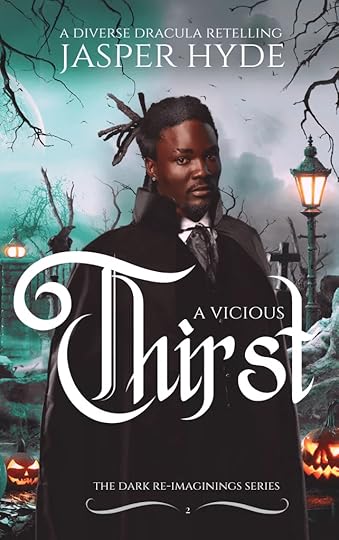 Visit Georgina Kiersten’s website to find out more!
Visit Georgina Kiersten’s website to find out more!My focus right now is A Vicious Thirst, which is my diverse Dracula retelling that I am writing right now. It’s a serial. It’s a free serial. If you just sign up on my newsletter and you will get free episodes by monthly.
I’m about… because I write in like a 4 act structure, so I’m about to hit the 4th act of the 1st volume of A Vicious Thirst. And yes, there’ll be multiple volumes of it.
And you will see some of your favorite folks, especially Carmilla, the vampire, who is now Queen of the Vampire Empire, which we love, and Latina, and has a trans wife, and I plan on having her own book at some point. But like I just, I’m having way too much fun making things as diverse as possible, and fun as possible and spicy as possible.
And yeah, I’m just gonna be doing a lot more serials, a lot more dark stuff. I can’t even talk about the dark stuff – well, a lot of the stuff that I have in the works, because I don’t want to get anybody’s hopes up in case it like crashes and burns.
But I will announce here first that Georgina Kiersten will be doing cozy fantasy and paranormal stuff. Think Gilmore Girls meets Practical Magic meets The Brown Sisters by Tabitha Hibbert. So that mix in a blender you’ll be getting next year.
I’m gonna be doing a lot more of that because I was at an impasse where I was like, I want to do more fantasy. But Georgina Kirsten is contemporary, and Oh, God! I don’t want to do another pen name. And so I said, You know what I can pivot. This is my job. This is my business. I can pivot wherever I want, and so I have, and I’m having way too much fun with that. And I’ll definitely be telling y’all more about that project in January. But yes, lots of stuff is in the works.
CMR: I’m really excited for that. And this might air in January, so that might work out really well! [laughs] Yeah. It’s been honestly wonderful to listen to you to have you on, thank you so much for being here. I think that’s about all we’ve got time for, or I could go on for like, two hours, I don’t know, but thank you so much for coming on the show. It’s been great.
GK: It’s been great talking to you, too.
Like This? Try These:February 21, 2025
Author Spotlight: Natalie Thorpe
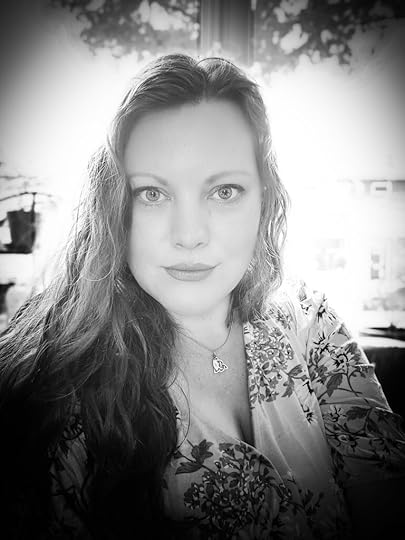
Natalie Thorpe (she/they) is a new author in the fantasy romance genre with the first installment in ‘The Wilt Trilogy’ having been published in the early autumn of 2024. Being from the Netherlands, Natalie Thorpe’s books are highly influenced by the landscape, traditions and cultures of the North-Western parts of Europe.
When not immersed in a book, either by reading or writing, Natalie roams the Dutch woods near her home with her faithful but stubborn canine companion, singing loud and out of tune (but out of earshot) or trying her hand at yet another hobby. After studying English language and literature, Natalie made the switch to become a teacher in primary education but has since quit teaching to prioritise her family while she moonlights as a caregiver for the elderly and dreams of being a full-time author.
Author Links:
Website: www.nataliethorpe.com
Instagram: natalie.thorpe.author
Threads: natalie_thorpe_author
Books available via Amazon global websites
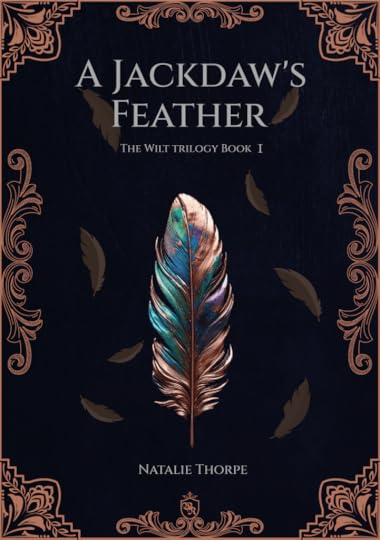
Few people know that Svea of Hoorne is an Unregistered Mage, although it has made her indispensable as her village’s healer. When a chance event causes her magic to do something unexpected, Svea’s spouse Esben becomes convinced she might be able to cure the ever spreading Wilt that threatens the kingdom. But even though Svea’s magic is exceptionally strong, it might cause more harm than it will do good.
Telling Esben the truth, however, means she risks losing him, but traversing the country may not be the safest thing to do for an Unregistered Mage now that the fearsome Roper is on the hunt.
Let’s talk about your trilogy, The Wilt. What was the inspiration behind this series, and what came first – the characters, the world, the premise/situation, or something else?
The start to this series, and I think my approach to writing in general, can best be described as a series of ‘what if’s’ as well as the desire to read a fantasy story where the main characters have a little more life experience to those in the books I had been reading myself up till then.
Together with my book bestie, and us being ‘of a certain age’, we often had issues with the more younger (ca. 20) main characters, while still very much appreciating the thrill of a starting romance. So this one basically started with “what if the main character has lived a settled life for years?”.
The world I thought up around Svea and her spouse was directly influenced by the flat landscape around me. It was winter and the withered and brown fields that were often flooded were in stark contrast with the lush evergreens in the woods. Being an advocate for ‘dying well’ (ie. think about the inevitable and have one’s shit in order before you pass), I knew I wanted death to be a major topic.
Can you explain a bit about the magic system in your world, and the process of developing it as you did your worldbuilding?
As previously stated, I ask myself a lot of questions during the development of a story. I have a notebook full of questions that sometimes lead to more questions but I always strive to answer.
In this case some of those questions were; what does the magic do, who has it and who doesn’t, where does it come from, and the biggest one: how can I use death-magic to enable life?
What was your favourite part of worldbuilding for The Wilt Trilogy, and can you share some rabbit holes this process sent you down?
One of my favourite things in the world building was the actual world building: making a map of the country, designing the topography and basing it on my own country. In the beginning the hardest part was coming up with names to places that didn’t sound too fantastical.
Eventually I decided the best and most realistic things had already been thought of and I started using and altering actual (historic) place names.
Another rabbit hole was calculating travel times and the landscape eventually evolved with the story to make things more fitting.
What are the main themes in The Wilt Trilogy, and how does the world, settings, and genre of the serial help you to convey them?
The main themes are centered around death and making the most of life, meaning that sometimes you need to step out of your comfort zone to discover the world had much more to offer than you might have thought initially.
One big point for me was also to explore what a world without religion, patriarchy and misogyny could look like.
Tell us about your characters – what is your favourite thing about your MC? What made you think ‘this is the character I want to spend a lot more time with’ as you were developing Svea?
At first I did not focus on Svea to be likable but I wanted her to be real; a settled woman going through the motions, caring for other people because it is her job as a healer (not because she is a woman!) even though she sometimes does it with great reluctance as she doesn’t care for other people much.
I wanted her to struggle with her anger and frustration; one the one hand she has a great power that she could use to shape the world to her liking but she keeps a lid on things to preserve the quiet life she’s living.
But clinging to other people’s expectations often limits a person’s own growth and that is something all of my main characters find out for themselves.
Which character do readers most connect with or love other than the MC, and who do they love to hate? Did this surprise you?
While reading the first book (A Jackdaw’s feather) many readers have indicated feeling torn between Svea’s spouse Esben and the third party (the mysterious Roper); the thrill of a passionate affair with a tall and dark stranger appeals to some while others favour the spouse (it’s been compared to the Rhysand/Tamlin situation, if that helps—readers will know what is meant).
This doesn’t surprise me but I suggest readers to continue reading; things may turn out quite differently than they expect!
A pleasant surprise was having a few positive comments on the first book’s gender-neutral, neurodivergent character Gamela; although I knew I thoroughly enjoyed their stoic, somewhat impassive demeanour, their level-headedness was much appreciated by readers also.

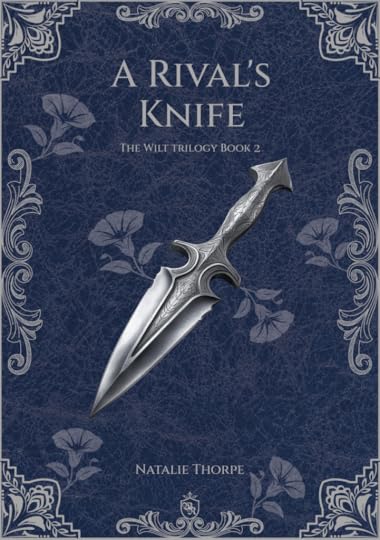
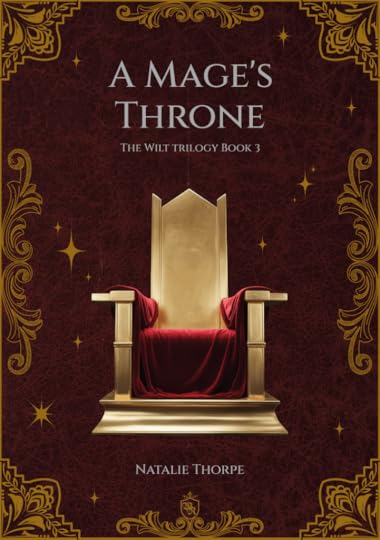 Buy NowLike This? Try These!
Buy NowLike This? Try These!
February 19, 2025
Eldritch Girl S04: Yelen & Yelena Episode 01 (Chapter 1)
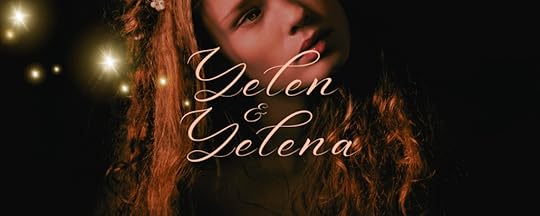 Buy it now: https://buy.bookfunnel.com/yaeabwh8zw
Buy it now: https://buy.bookfunnel.com/yaeabwh8zwListen: https://rss.com/podcasts/eldritch-girl/1827934
Chapter 01: Whispers airs on the Eldritch Girl Podcast today.
I am serialising my novel, YELEN & YELENA, weekly on Wednesdays starting today!
If you like to listen to your books, then I’m doing a read-along (I encourage you to pick up a copy to read along, or read ahead, or simply to support me).
It began with whispers in the marketplace, cooing from the lips of Mistress Mercer, and they spread like a stain.
The laundress who lives on the edge of the forest is a dark sorceress. She communes with dark spirits; she is corrupted in mind and flesh.
Laundress Yelena knew all too well that some stains never came out. As soon as she heard the whispers clinging to her name and tinging once-friendly eyes with doubt and suspicion, she knew exactly what sort of stain this was. She also knew there was nothing she could do about it.
Check out the novel with the handy video guide below!
Yelen and Yelena Pitchdeck PresentationGet the BookListen NowYou can also support the podcast for £1.50 per month (or more) on my Ko-Fi and get early access to the podcast episodes in the form of mp3s to download and keep… essentially, a free eBook you can listen to anywhere.
You can download Chapters 1 & 2 already for free. If you want the rest of the early access files, you’ll have to join up!
Join NowWhy a Podcast?For those new to the podcast and its ethos, I started recording my own work as a means of making it more accessible to people.
For the books I’ve sold, I’ve retained the audio rights, so my readalongs remain on the podcast unabridged (and you can skip over my ramblings at the start/end of the episodes).
I include content warnings – the ones that have been requested, and obvious to me, which may not cover all the things specific to listeners, so caution is advised – at the start of every episode, usually just before I launch into the reading.
Are There Sound Effects?For S01 (THE CROWS) I experimented a bit with sound effects.
S02 (THIRTEENTH) and S03 (THE DAY WE ATE GRANDAD) do not have any.
S04 has a background soundtrack and sound effects, as an experiment.
Early Access and mp3 FilesS04 is also a bit different in that this time I’m offering mp3 files of the season as early access episodes, available to members. I’m going to collate these into one package, and offer them as a bundle of mp3 files for general sale at the end of the season.
I have the original recordings so I can offer a stripped-down, voice-only version of the mp3 files, if anyone would prefer that, as a second option.
EARLY ACCESS EPISODES in the form of mp3 files to download and keep are available to Ko-Fi Members (including the lowest £1.50 per month tier), and everyone gets free access to Chapters 1 and 2 as mp3 files.
 https://ko-fi.com/s/72b0465d9d
https://ko-fi.com/s/72b0465d9dCredits:
This audio file comes with content notes and warnings for the book, and the theme music is “Quinn’s Dream” Kevin MacLeod (incompetech.com) Licensed under Creative Commons: By Attribution 4.0 License creativecommons.org/licenses/by/4.0
Other music used in these episodes:
Moonlight Hall – Kevin MacLeod (incompetech.com) Licensed under Creative Commons: By Attribution 4.0 License creativecommons.org/licenses/by/4.0
Morgana Rides – Kevin MacLeod (incompetech.com) Licensed under Creative Commons: By Attribution 4.0 License creativecommons.org/licenses/by/4.0
Redletter – Kevin MacLeod (incompetech.com) Licensed under Creative Commons: By Attribution 4.0 License creativecommons.org/licenses/by/4.0
Bittersweet -Kevin MacLeod (incompetech.com) Licensed under Creative Commons: By Attribution 4.0 License creativecommons.org/licenses/by/4.0
Spring Thaw -Kevin MacLeod (incompetech.com) Licensed under Creative Commons: By Attribution 4.0 License creativecommons.org/licenses/by/4.0
Achaidh Cheide – Kevin MacLeod (incompetech.com) Licensed under Creative Commons: By Attribution 4.0 License creativecommons.org/licenses/by/4.0
Sound effects courtesy of BBC Royalty Free Sound Effects
February 16, 2025
Book Review: Yelen and Yelena
Many thanks to Leane for this wonderful ARC review! Please check out the original post and subscribe to get more reviews like this. Leane has loads of reviews posted, and you will get good thoughts and lots of books on your radar!
Read the review below:
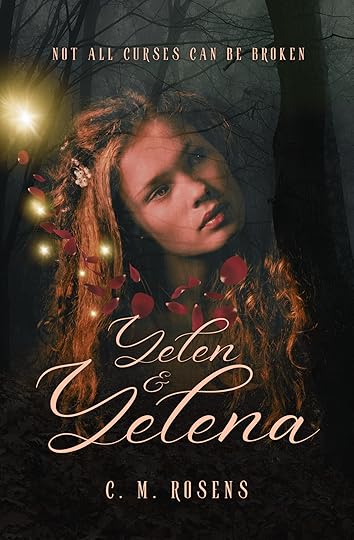
This is a wonderfully darker retelling of Beauty and the Beast with amazingly diverse representation.
Book Review: Yelen and Yelena
February 14, 2025
RELEASE DAY
 BUY NOW: https://buy.bookfunnel.com/yaeabwh8zwBuy the bookExtended Blurb:
BUY NOW: https://buy.bookfunnel.com/yaeabwh8zwBuy the bookExtended Blurb:ONCE UPON A TIME… In a rural corner of the Provinces simmering with civil unrest, Laundress Yelena’s village is plagued by a dangerous fungal rot oozing from the forest. When she is falsely accused of dark sorcery and evicted from her cottage so her landlord can sell up, Yelena is forced to leave her home and loved ones behind, and entrusts herself to the wind-borne voices of the restless dead to see where they lead her.
Yelen is a forgotten tyrant, turned into a monster hundreds of years ago after accepting a cursed flower, and left to stalk his enchanted castle all alone. Despite becoming a better person over the centuries, Yelen’s aromanticism means he can never fulfil the ‘mutual romantic love’ condition of the curse, and to his relief, he will never have to return to form of the power-hungry brute he once was… But he craves companionship and an end to his lonely existence.
When the wind leads Yelena to Yelen, she discovers a kindred spirit in the aromantic, bi-attracted monster, and their relationship quickly escalates. But being a guest in a cursed castle with a lonely, amorous Beast is not all fun and games – while exploring, Yelena makes a disturbing discovery about the source of the rot, and starts showing symptoms of infection herself.
Can Yelen and Yelena work together to find a lasting cure for the rot seeping beyond the castle walls, or will the curse claim another victim?
YELEN & YELENA is a standalone, monster-loving ‘tour de force’, perfect for fans of Beauty and the Beast re-imaginings, Silvia Moreno-Garcia’s Mexican Gothic, and T. Kingfisher’s What Moves The Dead. Look no further for a deeply atmospheric Dark Gothic Fantasy with a Hopepunk core, and a sapphic riff on Orpheus & Eurydice subplot.
Shop OptionsAll eBook platforms: buy.bookfunnel.com/yaeabwh8zw
Kindle – Apple – Nook – Kobo – Kobo Plus – Everand – Thalia – Smashwords – Vivilo – Fable
Print options: Amazon or Barnes & Noble
Direct from the author:
eBook from itch.io
eBook from Ko-Fi
Signed paperbacks from Ko-Fi
The novel will be serialised weekly, unabridged, on Eldritch Girl podcast. You can join the £1.50 per month membership to support the podcast and access mp3 downloads of each episode/chapter, along with early access downloads so you get to catch up before anyone else.
Early access: out now via Ko-Fi
Audio serial begins: 19th Feb
I can’t thank everyone enough for embracing my queer, Gothic, Dark Fantasy.
Here are what readers are saying:
A fantastic aromance of Gothic beauty and fairytale horror. C.M. Rosens introduces a rich world as a playground for her Beauty and the Beast retelling. It’s perfect for those wondering why the curse had to be broken in the first place.
Vivian Valentine – author of the Amelia Temple series
a tour de force. incredible mycelial hope-punk-romance-adventure-mystery-fantasy. the writing is gorgeous and lush, creating full worlds in my imagination. the story was so interesting, the spice so spicy, and I loved how the story played out in unexpected ways. the slow pace was new for me and I loved it for the way it allowed time to nestle into the world and characters.
GoodReads and Storygraph Review
Beautifully written, had me completely engrossed immediately.
Still processing this one.
My jaw was on the floor a few times, to say the least.
Gothic horror lovers, you will love this one. You do not want to miss it.
If you like monster smut, you will be very happy with this one.
If you like that combo, this might be your next favorite read.
GoodReads Review
This is a fascinating dark fantasy reimagining of Beauty and the Beast, with its own rich world-building and well-developed characters.
The internal worlds of the characters are vividly described, and I deeply resonated with Yelena’s feelings of dispossession and longing for a home that wasn’t hers anymore. The narrative is effective in showing the characters’ struggles to adapt to a changing society that isn’t kind to the working class, highlighting the inevitable nature of change and the universal human need for community and support.
I absolutely loved the author’s exploration of the consequences of an unbroken curse, the interplay of geopolitics, and the shifting dynamics of power in it all. And also the spice was good, so read on if you’re a monster lover.
This was a fantastic one and I’m looking forward to the rest of the planned series by this author, all set within the same universe.
Storygraph Review
GoodreadsStorygraph
This book blends fantasy re-telling and gothic horror impressively. I love how subversive it was, turning the beauty and the beast story on its head, with a self-assured protagonist eagerly seeking the beast out. The prose was beautiful and very T Kingfisher-esque and I loved the dark yet hopeful ending. And, of course, a lovely queer-normative world.
Storygraph Review
I had 1000 eARCs to give away, and almost gave out all of them. I’m hoping for double-figures reviews, as of these claims on the eARC, there were around 600-700 downloads. Only ~10% of ARCs are read and reviewed, and sometimes less, so I’m hoping that I get (eventually) around 50 reviews for this book to help it gain visibility and traction. Amazon’s algorithm only starts pushing books with 50+ reviews organically, and I’m not sure about the algorithms on other platforms, but copy/pasting or rating will really help.
GoodReads and Storygraph are also excellent for visibility. I’m hoping some word of mouth will also push this book into the shelves and eReaders of readers!
I was nervous about giving away so many copies, so if you see this book pirated anywhere – my Ko-Fi link is here, you can thank me for writing it by buying me a coffee: ko-fi.com/cmrosens.
Rainbow Rep in Yelen & YelenaYelen & Yelena has aromantic and bisexual MCs, and a sapphic main secondary character with her own Orpheus & Eurydice subplot. The bisexual aromantics are both allosexual, and have had sexual partners of multiple genders. There is also an achillean pairing mentioned, which appears later on page as m/m/f.
The relationship structures depicted are often open or polyamorous in nature, but there are also monogamous relationships and cishet relationships (parents of MCs, background villagers, and so on).
Sex work is also depicted in a neutral way, as the main character is a sex worker by choice, for enjoyment and additional income, and as part of her personal faith practices. This does not mean her experiences of this work have been universally positive, or that her clients have always been respectful. Disrespect towards her is related to the power imbalance of the class system, not due to her occupation being seen as inherently ‘bad’.
The world itself is queernormative with theological reasons for accepting non-binary identities (and binary trans identities by extension).



